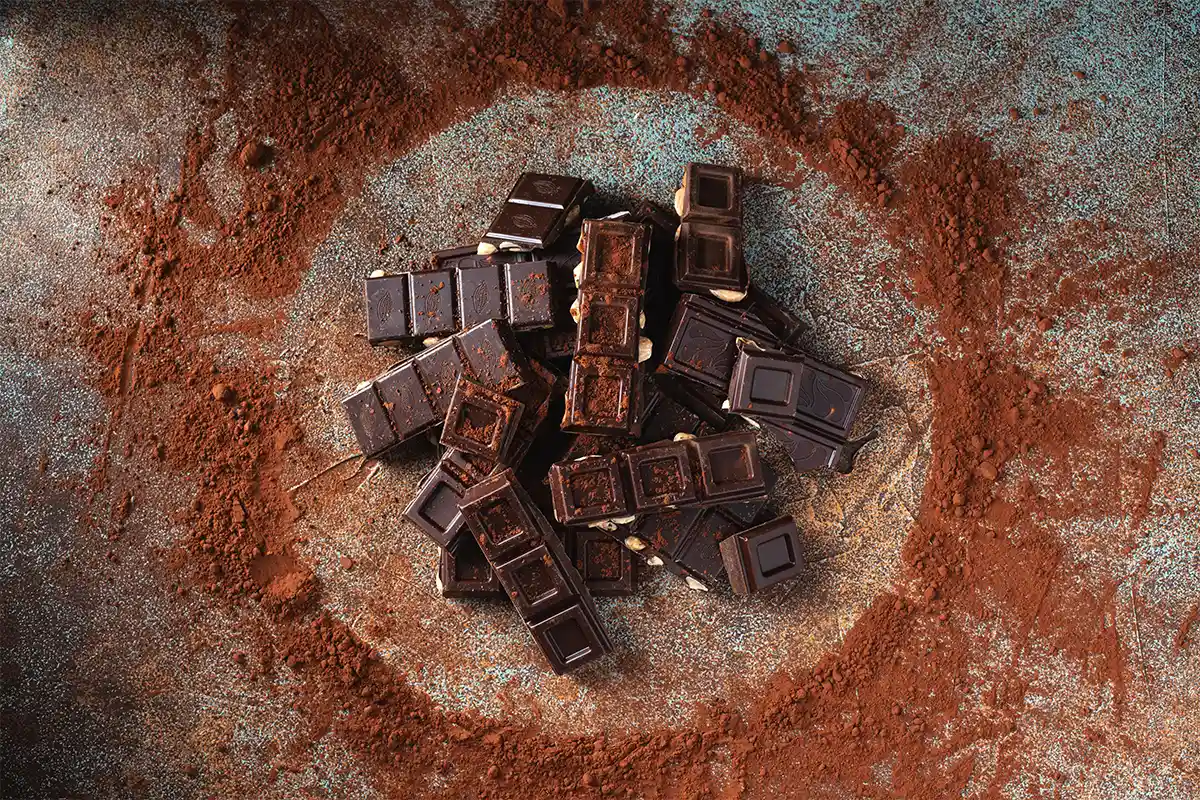A Deep Dive into the World of Cocoa: Its History, Varieties, and Influence
Introduction
Chocolate is more than just a sweet treat; it’s a global phenomenon that has captivated people for centuries. From its ancient origins in Mesoamerican cultures to its modern-day role in both gourmet and everyday snacks, chocolate holds a special place in our hearts and kitchens. In this guide, we’ll explore the fascinating history of chocolate, its diverse varieties, and its cultural significance.
Tracing the Roots: The History of Cocoa
From Ancient Cultures to Modern Times
Centuries ago, the Maya and Aztec civilizations revered cacao as a divine gift. The beans were not only consumed as a bitter beverage but also used as currency. Eventually, Spanish explorers introduced cacao to Europe, where it transformed into the sweet confection we know today. This shift in taste marked the beginning of its rise to global popularity.
Evolution in Europe and Beyond
Once introduced to Europe, cacao quickly became a luxury item. Over time, innovations in processing and flavoring made it more accessible to the masses. Today, it’s enjoyed in countless forms, from simple bars to gourmet creations.
For more details on how this treat is crafted, visit this comprehensive guide.
Exploring Varieties and Flavors
The Depth of Dark Selections
With a high cocoa content, darker varieties offer a rich, slightly bitter flavor. People often favor them for their antioxidant properties and versatility in both sweet and savory dishes. This variety also pairs well with a range of flavors, making it a popular choice in culinary creations.
The Sweetness of Milk-Based Treats
Milk solids give milk-based cocoa products their creamy texture and milder taste. Confections and snacks widely use this variety, making it appealing to those who prefer a sweeter experience.
Distinctive White Varieties
Unlike its darker counterparts, white products contain no cocoa solids, relying on cocoa butter, sugar, and milk for their flavor. While some debate whether these qualify as true chocolate, white varieties remain a favorite for those who enjoy a lighter, sweeter taste.
For further insights into the health aspects of these varieties, check out this helpful resource.
Crafting Cocoa Products: From Bean to Bar
Understanding the Production Process
The journey from cacao bean to finished product involves several crucial steps, including fermentation, drying, roasting, and grinding. These processes help develop the complex flavors that characterize high-quality cocoa-based goods. After the beans are processed, they are transformed into a paste known as chocolate liquor, which forms the base for various products.
Refining and Tempering Techniques
To achieve the smooth texture and glossy appearance of premium chocolate, techniques like conching and tempering are essential. Conching involves mixing the product to refine its texture, while tempering ensures the final product has the right crystal structure for a shiny finish and satisfying snap.
If you’re curious about ethical production practices, explore this guide on fair trade.
Cocoa’s Role in Culture and Cuisine
Celebrations and Traditions
Cocoa-based treats play a pivotal role in various cultural celebrations. From Valentine’s Day gifts to Easter eggs, their presence is felt worldwide. Moreover, these products have become synonymous with special occasions, offering a sense of indulgence and joy.
Literature and Film
Beyond the kitchen, cocoa has found its way into the arts. Stories like Charlie and the Chocolate Factory and films such as Chocolat showcase the magic and allure of this sweet treat, highlighting its cultural significance.
Diverse Culinary Applications
Confections and Snacks
Cocoa is a versatile ingredient in countless confections. Whether molded into bars, truffles, or filled with creams and nuts, its ability to pair with various flavors makes it a favorite in the world of sweets.
Beverages and Desserts
From hot chocolate to chocolate-flavored beverages like mochas, this ingredient shines in both drinks and desserts. Additionally, cocoa’s richness enhances baked goods such as brownies, cakes, and cookies, making them even more indulgent.
Baking with Cocoa
In baking, cocoa is often used to add depth and richness to various recipes. Popular examples include chocolate mousse, dense brownies, and moist cakes, each showcasing the ingredient’s versatility.
Environmental and Ethical Considerations
Challenges in Sustainability
The demand for cocoa has led to environmental challenges, particularly in farming. Deforestation and unsustainable practices are common issues that the industry must address. As consumers, supporting sustainable brands can help mitigate these impacts.
Fair Trade and Ethical Sourcing
Fair trade initiatives ensure that farmers receive fair compensation and work in ethical conditions. By choosing fair trade cocoa products, consumers can contribute to positive change within the industry, supporting both environmental and social sustainability.
Frequently Asked Questions
What Are the Main Varieties?
Dark, milk, and white varieties are the primary types, each offering unique flavors and textures.
Is Dark Chocolate Healthier?
Many people consider darker selections healthier because they contain higher cocoa content and antioxidant properties, though moderation is key.
How Are These Products Made?
Producers develop their flavor and texture through fermentation, drying, roasting, and tempering processes.
What’s the Difference Between Dutch-Processed and Regular Cocoa?
Manufacturers treat Dutch-processed cocoa to neutralize its acidity, which results in a milder flavor and darker color.
How Do You Temper Chocolate?
Tempering involves heating, cooling, and reheating the product to achieve a glossy finish and a firm texture.
Conclusion: Why Cocoa Remains a Global Favorite
From its ancient roots to its modern-day applications, cocoa continues to captivate people worldwide. Whether enjoyed as a simple snack, an elegant dessert, or a comforting drink, its versatility ensures it remains a beloved treat across cultures and generations. Additionally, the ongoing efforts to make production more sustainable highlight the industry’s commitment to preserving this cherished ingredient for the future.
For more culinary inspiration and delicious recipes, visit our All Recipes Collection.
I’m Billy, a classically trained culinary school graduate from The Culinary Institute of America with over 12 years in the restaurant industry and over 19 years of cooking experience.


2 thoughts on “Chocolate : Guide to discover History, Types, and Cultural Impact”